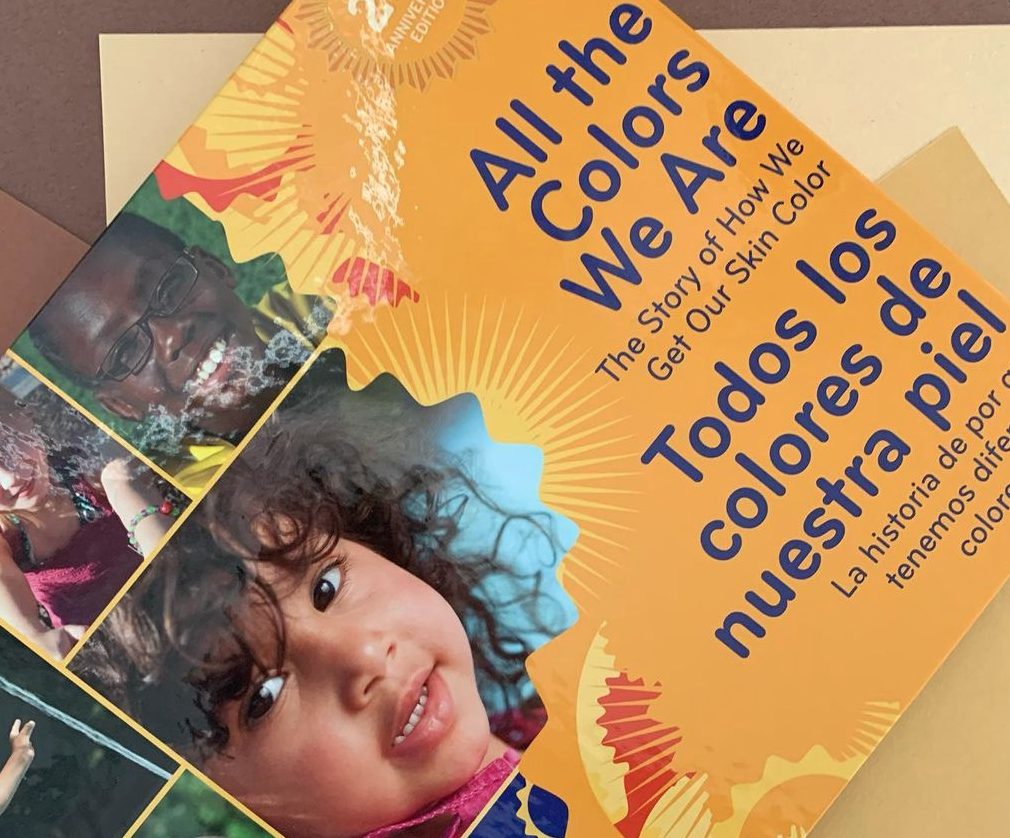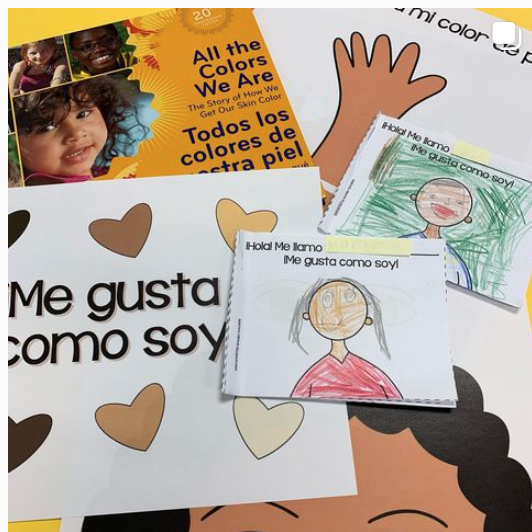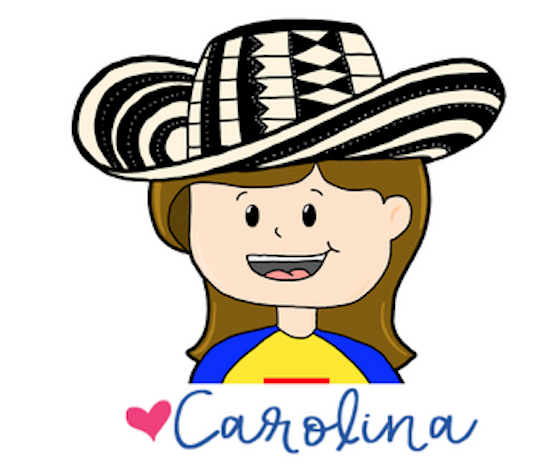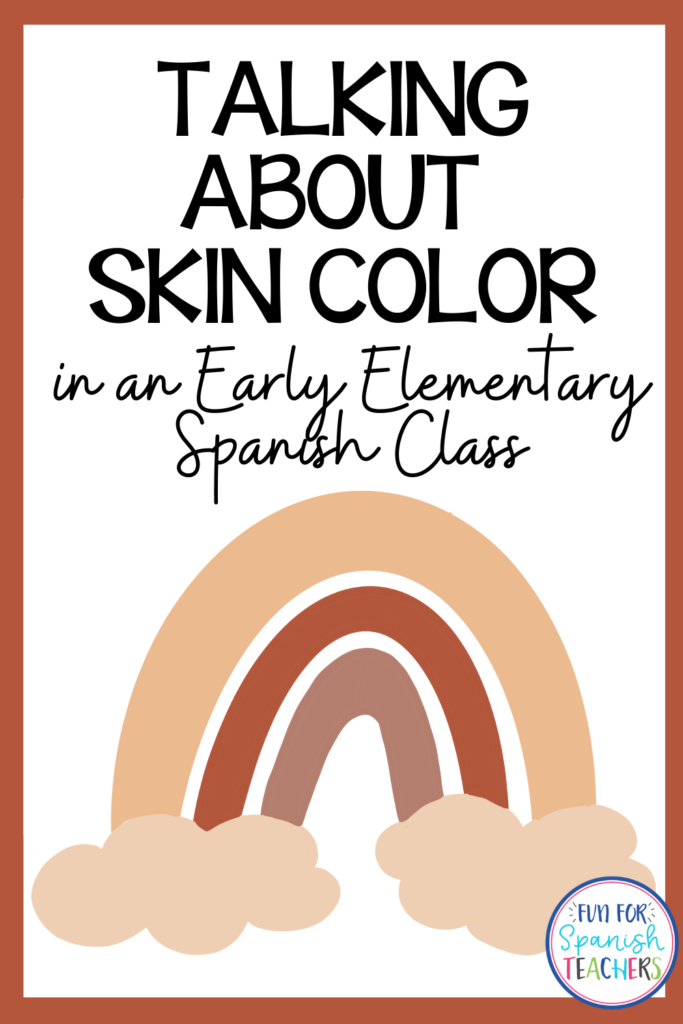While talking about how unique we are, I have used the book All the Colors We Are – Todos los colores de nuestra piel by Katie Kissinger, and it has been a great resource to start the conversation. The children love learning about the magic power we all have called melanin and how we get our skin color from the sun, our family, and our ancestors.

All the Colors We Are: The Story of How We Get our Skin Color*
Here are some ideas to talk with your students about how unique we all are:
1. Start by reading the first pages of the book All the Colors We Are. This introduces the children to the idea that we all have different skin color and why everyone is unique, plus you will see that your younger students will enjoy saying the word “melanina” a lot!
I take the time to have this conversation in English. Chances are that your students are already reading books related to race/skin colors with their homeroom teachers too! This is a great opportunity to talk about the different eyes, hair, and skin colors in Spanish.
Mi ojos son de color negro, azul, café/miel
Mi pelo es negro, café, rubio
Mi color de piel es blanco, café, negro.
As the book All the Colors We Are suggests, children in younger grades can also compare their skin color to things in nature. I think this is great with lower elementary students but not as much with older students.
2. I created a resource to accompany and support the book All the Colors We Are. The resource is called Me gusta como soy. It includes a short story and activities that go along with it.
Read the short story Me gusta como soy – Something that has worked great during reading the story is to invite the children to engage in the reading by saying the phrase “A mí tambíen” after reading each page of the story. For example, if you read “Me gustan mis ojos,” invite the class to say “A mí también.” You might also ask again about the color of their eyes. After reading the story, make it a celebration by creating your own song with the lines in the story.
3. If you don’t own multicultural crayons,* colored pencils,* or markers,* you really need them for this! Allow students to look at the crayons, colored pencils, or markers to find which one matches or is close to their skin color. Put together mini-books using multicultural crayons and other colors.
4. Invite your students to take the mini-book home to share and start and share with their parents what they learned about where we get our skin color from.
5. Students who are learning from home can also complete their books via Seesaw.


I hope you join me in celebrating your students and talking about skin color in Spanish class!
Abrazos virtuales,

*Amazon Affiliate Links: Fun for Spanish for Spanish Teachers participates in the Amazon LLC Associate program. This post contains affiliate links wich means that this site earns advertising feeds by linking to Amazon products. Participation in this program doesn’t alter the cost for the buyer.






